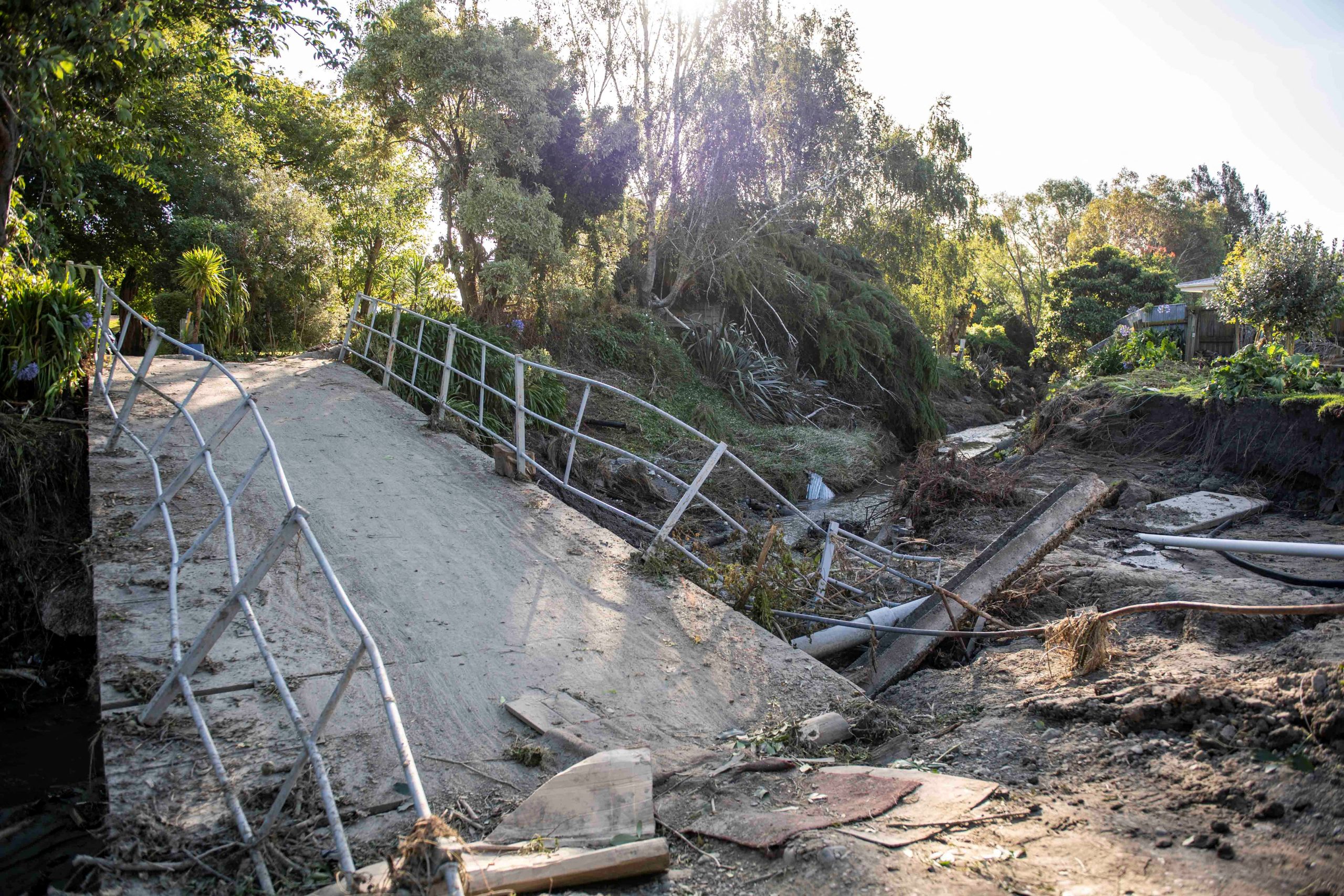
[elfsight_social_share_buttons id=”1″]
The death toll from Cyclone Gabrielle in New Zealand climbed to 11 on Sunday as thousands of people remained missing a week after the storm struck the country’s North Island.
The cyclone hit the island’s northernmost region on Feb. 12 and tracked down the east coast, inflicting widespread devastation. Prime Minister Chris Hipkins has called Gabrielle New Zealand‘s biggest natural disaster this century.
On Sunday, police said two more people had died in hard-hit Hawke’s Bay in circumstances related to the cyclone.
More fatalities are possible, Hipkins told reporters, saying 3,216 people had been determined to be OK, while police were trying to ascertain the status of more than 3,000 others.
Lives had been “turned upside down” by the disaster and recovery was a “steep mountain ahead”, he said, pointing to disrupted telecommunications, shortages of fresh water, and damaged roads still restricting access to some areas.
Supply chains were disrupted causing problems moving goods, many crops had been destroyed, and 28,000 homes were still without power, he said.
“The true extent of the devastation and loss becomes clearer with every passing day,” the prime minister said.
A team from Fiji would leave for New Zealand in the coming days to assist with recovery, one of 12 offers of international aid received so far, Hipkins said. Twenty-seven emergency workers from Australia are assisting with the relief effort.
Recovery efforts continued on Sunday, with teams from Auckland Council carrying out rapid building assessments on damaged homes in the coastal areas of Muriwai and Piha, about 40 miles west of the nation’s largest city, Auckland.
Emergency authorities and the military have been dropping critical supplies via helicopter to communities stranded since the cyclone, which washed away farms, bridges, and livestock and inundated homes.
Police have sent an extra 100 officers to Hawke’s Bay and nearby Tairawhiti, including to isolated areas, amid reports of looting.
“The police are working to maintain law and order,” Hipkins said.
DAMAGE COULD EXCEED $8 BILLION
New Zealand warned on Monday the final cost of the recovery effort could rise above $8 billion as authorities announced emergency funding to help in the recovery efforts.
“The required investment to reconnect our communities and future-proof our nation’s infrastructure is going to be significant and it will require hard decisions,” said Hipkins at a news conference announcing an emergency NZ$300 million ($187.08 million) cyclone relief package.
Earlier on Monday Finance Minister Grant Robertson said the total cost to the government could be similar to the NZ$13.5 billion (8.42 billion) it spent rebuilding Christchurch after the devastating 2011 earthquake.
Robertson has been appointed Cyclone Recovery Minister, in addition to his existing portfolio.
The interim package provides NZ$250 million to fix critical roads across disaster-hit regions, and a further NZ$50 million in emergency support was set aside for businesses and primary producers. More relief and re-building funding from the government is expected.
Hipkins also extended the national state of emergency, which was declared last week for only the third time in its history, a further seven days to help the recovery and relief efforts.
New Zealand has deployed 60 Starlink satellites, built by Elon Musk-owned SpaceX, with another 30 on the way, to plug gaps in the telecommunications network as roughly 15,000 people across the North Island remain without power.
Recovery efforts are continuing with search and rescue teams still working in cyclone damaged areas, while power and telecommunications remain down for some homes. Roads are closed and people are reporting issues getting cash.
($1 = 1.6036 New Zealand dollars)
Copyright 2023 Thomson/Reuters
